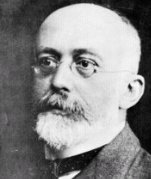Evolution is not
only the development of new species from older ones, as most people assume.
It is also the minor changes within a species from generation to generation
over long periods of time that can result in the gradual transition to new
species.
The biological sciences now generally define evolution as being the sum total of the genetically inherited changes in the individuals who are the members of a population's gene pool. It is clear that the effects of evolution are felt by individuals, but it is the population as a whole that actually evolves. Evolution is simply a change in frequencies of alleles in the gene pool of a population. For instance, let us assume that there is a trait that is determined by the inheritance of a gene with two alleles--B and b. If the parent generation has 92% B and 8% b and their offspring collectively have 90% B and 10% b, evolution has occurred between the generations. The entire population's gene pool has evolved in the direction of a higher frequency of the b allele--it was not just those individuals who inherited the b allele who evolved.
 |
|
|
Godfrey
Hardy |
 |
|
|
Wilhelm Weinberg |
This definition of evolution was developed largely as a result of independent work in the early 20th century by Godfrey Hardy, an English mathematician, and Wilhelm Weinberg, a German physician. Through mathematical modeling based on probability, they concluded in 1908 that gene pool frequencies are inherently stable but that evolution should be expected in all populations virtually all of the time. They resolved this apparent paradox by analyzing the net effects of potential evolutionary mechanisms.
Hardy, Weinberg, and the population geneticists who followed them came to understand that evolution will not occur in a population if seven conditions are met:
| 1. | mutation is not occurring |
|---|---|
| 2. | natural selection is not occurring |
| 3. | the population is infinitely large |
| 4. | all members of the population breed |
| 5. | all mating is totally random |
| 6. | everyone produces the same number of offspring |
| 7. | there is no migration in or out of the population |
These conditions are the absence of the things that can cause evolution. In other words, if no mechanisms of evolution are acting on a population, evolution will not occur--the gene pool frequencies will remain unchanged. However, since it is highly unlikely that any of these seven conditions, let alone all of them, will happen in the real world, evolution is the inevitable result.
Godfrey Hardy and Wilhelm Weinberg went on to develop a simple equation that can be used to discover the probable genotype frequencies in a population and to track their changes from one generation to another. This has become known as the Hardy-Weinberg equilibrium equation. In this equation (p² + 2pq + q² = 1), p is defined as the frequency of the dominant allele and q as the frequency of the recessive allele for a trait controlled by a pair of alleles (A and a). In other words, p equals all of the alleles in individuals who are homozygous dominant (AA) and half of the alleles in people who are heterozygous (Aa) for this trait in a population. In mathematical terms, this is
p = AA + ½Aa
Likewise, q equals all of the alleles in individuals who are homozygous recessive (aa) and the other half of the alleles in people who are heterozygous (Aa).
q = aa + ½Aa
Because there are only two alleles in this case, the frequency of one plus the frequency of the other must equal 100%, which is to say
p + q = 1
Since this is logically true, then the following must also be correct:
p = 1 - q
There were only a few short steps from this knowledge for Hardy and Weinberg to realize that the chances of all possible combinations of alleles occurring randomly is
(p + q)² = 1
or more simply
p² + 2pq + q² = 1
In this equation, p² is the predicted frequency of homozygous dominant (AA) people in a population, 2pq is the predicted frequency of heterozygous (Aa) people, and q² is the predicted frequency of homozygous recessive (aa) ones.
From observations of phenotypes, it is usually only possible to know the frequency of homozygous recessive people, or q² in the equation, since they will not have the dominant trait. Those who express the trait in their phenotype could be either homozygous dominant (p²) or heterozygous (2pq). The Hardy-Weinberg equation allows us to predict which ones they are. Since p = 1 - q and q is known, it is possible to calculate p as well. Knowing p and q, it is a simple matter to plug these values into the Hardy-Weinberg equation (p² + 2pq + q² = 1). This then provides the predicted frequencies of all three genotypes for the selected trait within the population.
By comparing genotype frequencies from the next generation with those of the current generation in a population, one can also learn whether or not evolution has occurred and in what direction and rate for the selected trait. However, the Hardy-Weinberg equation cannot determine which of the various possible causes of evolution were responsible for the changes in gene pool frequencies.
Significance of the
Hardy-Weinberg Equation
By the outset of the 20th century, geneticists were able to use Punnett squares to predict the probability of offspring genotypes for particular traits based on the known genotypes of their two parents when the traits followed simple Mendelian rules of dominance and recessiveness. The Hardy-Weinberg equation essentially allowed geneticists to do the same thing for entire populations.
It is important not to lose sight of the fact that gene pool frequencies are inherently stable. That is to say, they do not change by themselves. Despite the fact that evolution is a common occurrence in natural populations, allele frequencies will remain unaltered indefinitely unless evolutionary mechanisms such as mutation and natural selection cause them to change. Before Hardy and Weinberg, it was thought that dominant alleles must, over time, inevitably swamp recessive alleles out of existence. This incorrect theory was called "genophagy" (literally "gene eating"). According to this wrong idea, dominant alleles always increase in frequency from generation to generation. Hardy and Weinberg were able to demonstrate with their equation that dominant alleles can just as easily decrease in frequency.
The next six sections of this tutorial explore the mechanisms in nature that can cause evolution to occur.